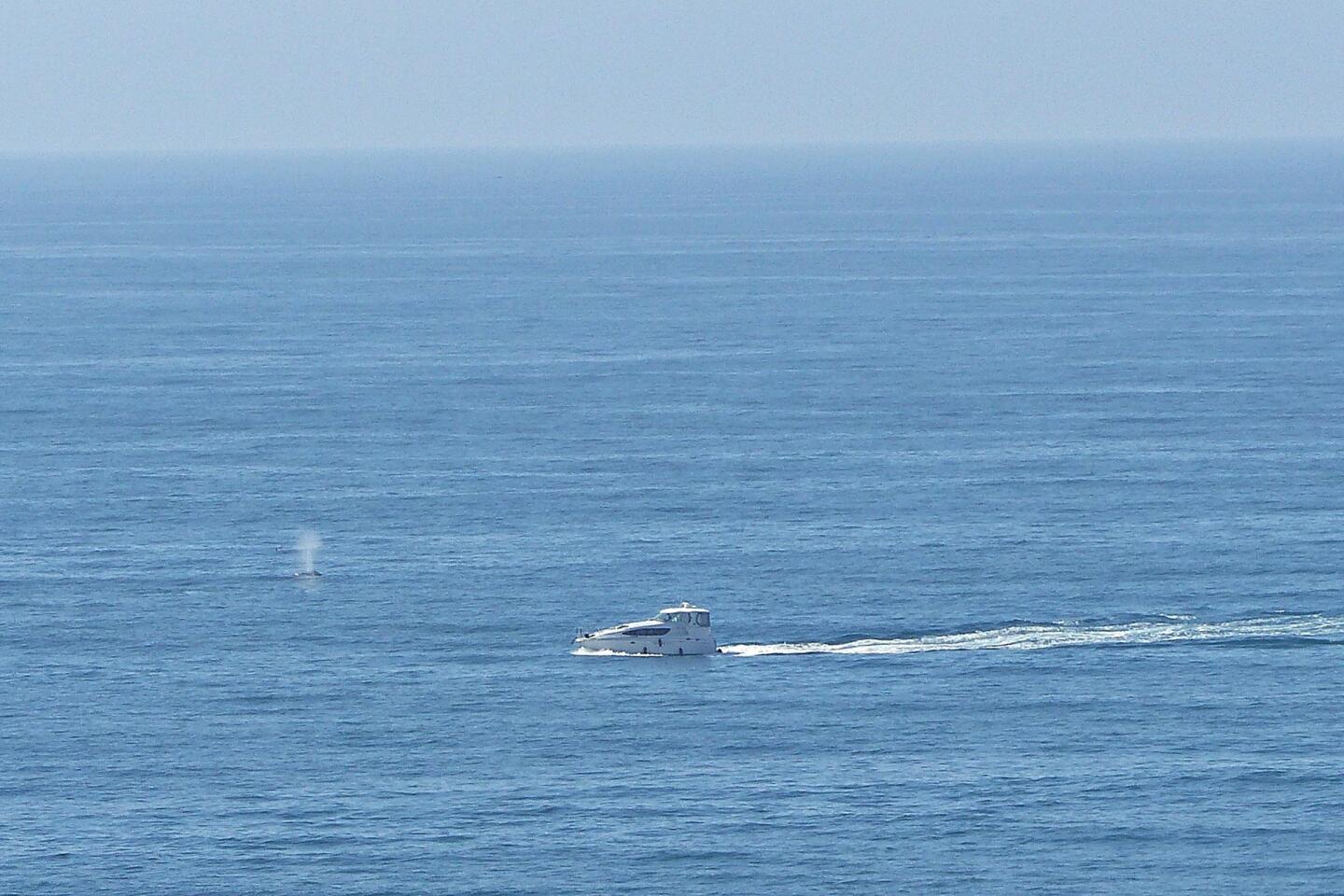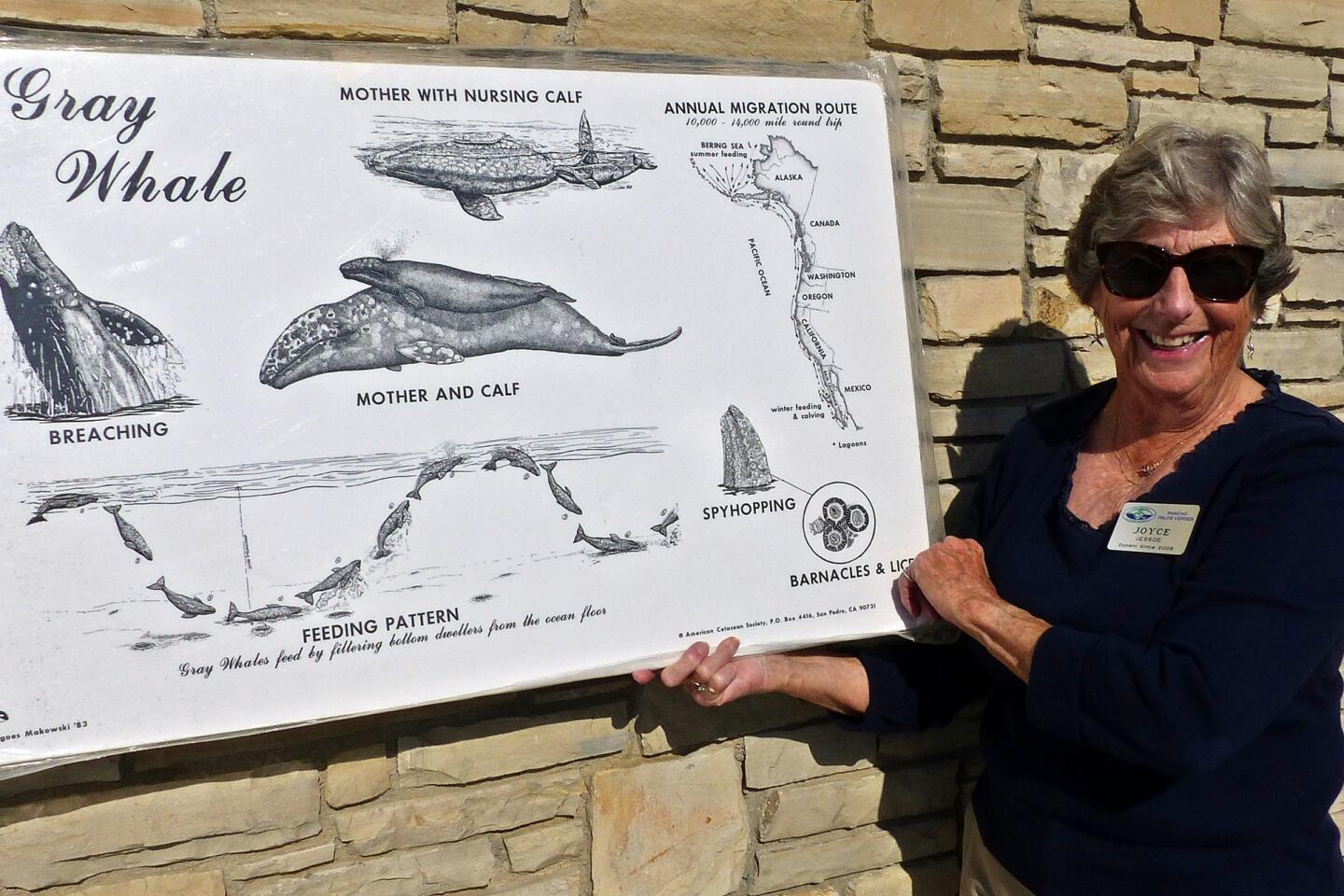Whale-watching with pros at Point Vicente on the Palos Verdes Peninsula -- for free
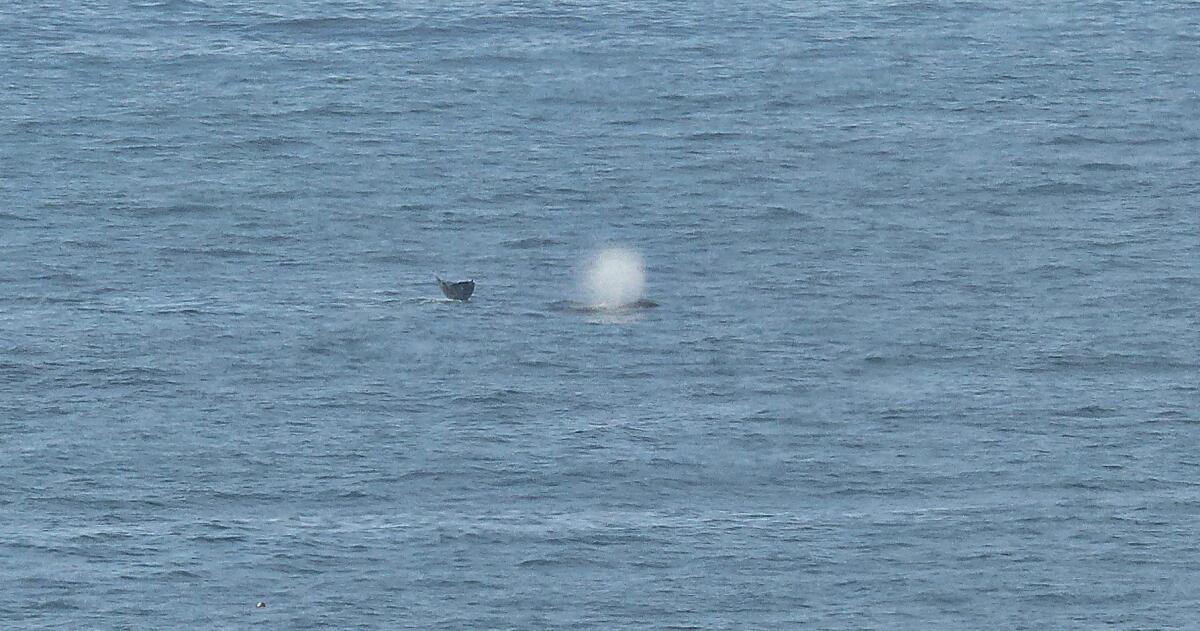
A whale’s fluke and a blow can be seen with cameras and binoculars from the Palos Verdes Peninsula. This is a no-cost way to see the Pacific gray whales that migrate 10,000 miles between Mexico’s Baja Peninsula and Alaska.
- Share via
“There’s a blow! Right above post 17!”
Heads swivel as binoculars and cameras are trained on the sighting — it’s probably one of the magnificent gray whales migrating in substantial numbers off the Palos Verdes Peninsula shoreline.
Yup, it’s that season again, so we’re back for a favorite no-cost, low-impact activity right in our L.A. backyard: daily whale-watching from the shore at Point Vicente Interpretive Center (31501 Palos Verdes Drive West, Rancho Palos Verdes; (310) 377-5370).
Over a few hours on a recent weekend, my family and I spotted a feathery telltale blow as soon as we sat down for our cliff-side picnic. With my Nikon 8 x 40 binoculars, I zoomed in on the whale not far offshore, watching it come repeatedly to the surface around a small, now-very-still boat.
Sidle up close to the observers from the L.A. chapter of the American Cetacean Society — who are here from early December to May conducting an annual census of the Pacific grays — and you can learn a lot about that blow you see in the distance.
“Heart-shaped” likely means gray whale, while a narrower blow (the misty jet of vapor exhaled as the whale surfaces) indicates a fin or humpback.
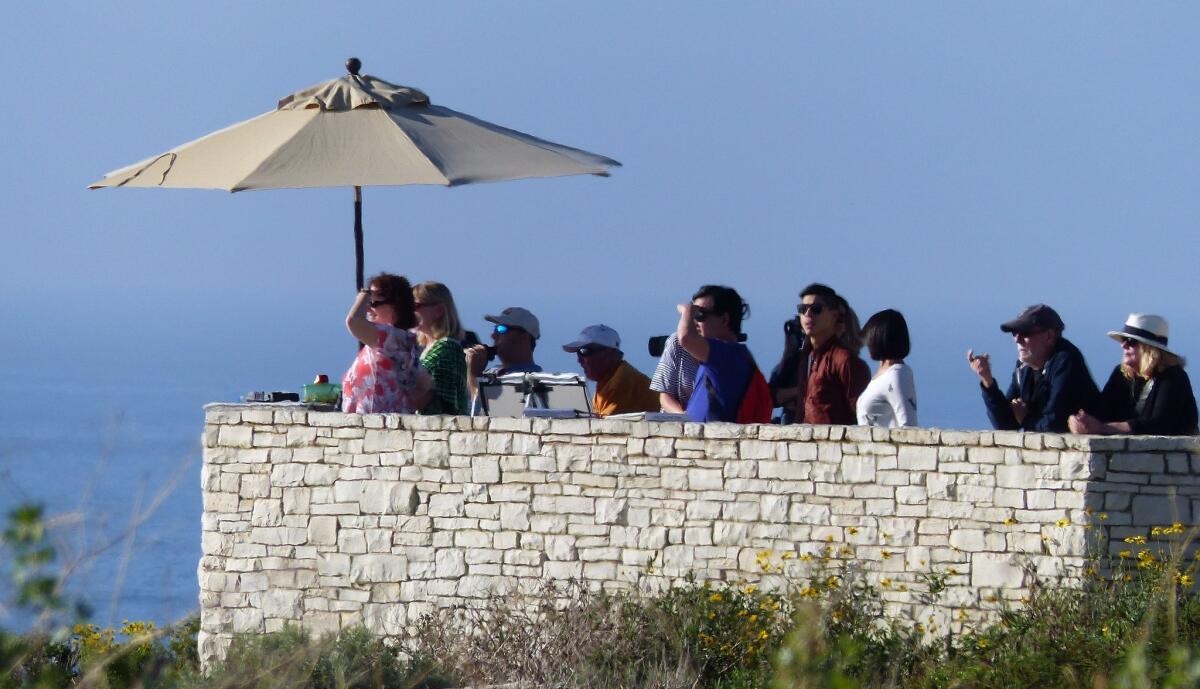
Observers and visitors scan the water from the Point Vicente interpretive center’s viewing deck.
With their marine binoculars and powerful scopes, the knowledgeable volunteers can identify a dorsal fin (read fin or humpback) or dorsal hump and knuckles (grays) or the notched tail fluke and distinctive barnacle patches of the gray.
Some of the spectators call out their finds: “Over by the boat, is that something jumping?” Yes, a pod of acrobatic dolphins.
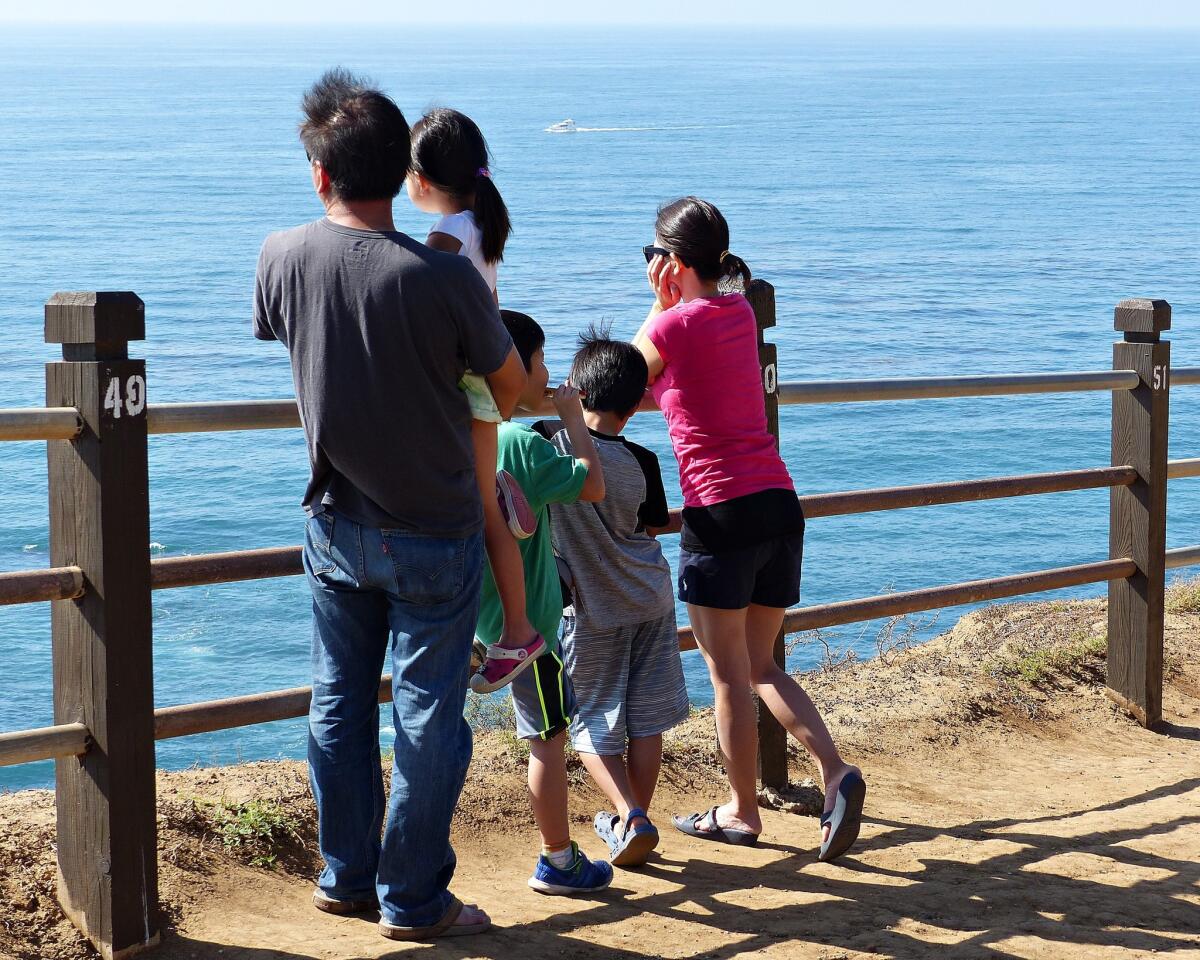
A family observes the ocean activity below.
Next up over the afternoon: several migrating pairs, some solo travelers and one meandering whale just past — you guessed it — the spot some call “Whale Rock.’’
With charts and maps, a friendly docent explains the 10,000-mile round-trip migration story from arctic seas to the mating and calving lagoons in Baja California, Mexico. Why so many whales here? Protected waters, probably, and because mothers with calves travel close to the shore.
In the afternoon’s stunning finale, a gray begins breaching — leaping vertically almost out of the water — in a spot that’s easily visible even without binoculars. We awed onlookers cheer appreciatively.
Coming up: The interpretative center’s “Whale of a Day,” on March 12 from 10 a.m. to 4 p.m., with exhibits, crafts and food plus whale watching from the shore. Free parking and shuttle service from Rancho Palos Verdes City Hall. Info: www.whaleofaday.com or call (310) 544 5260
ALSO
At Yosemite, new names, new numbers and a missing sign
Five Las Vegas hotels are raising resort fees, starting now
Like to bike but hate traffic? Try this easy ride from the Cascades to Seattle
More to Read
Sign up for The Wild
We’ll help you find the best places to hike, bike and run, as well as the perfect silent spots for meditation and yoga.
You may occasionally receive promotional content from the Los Angeles Times.

